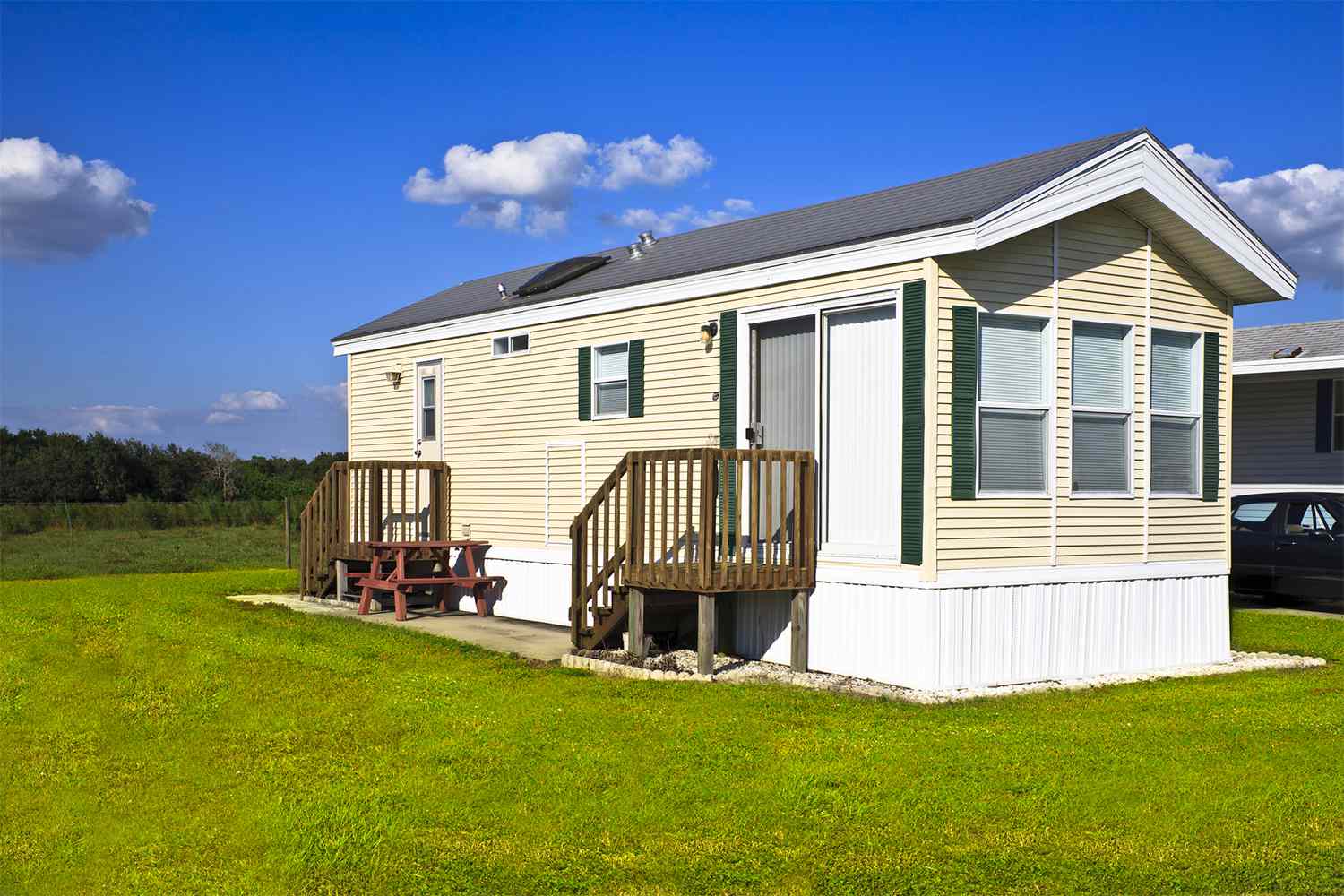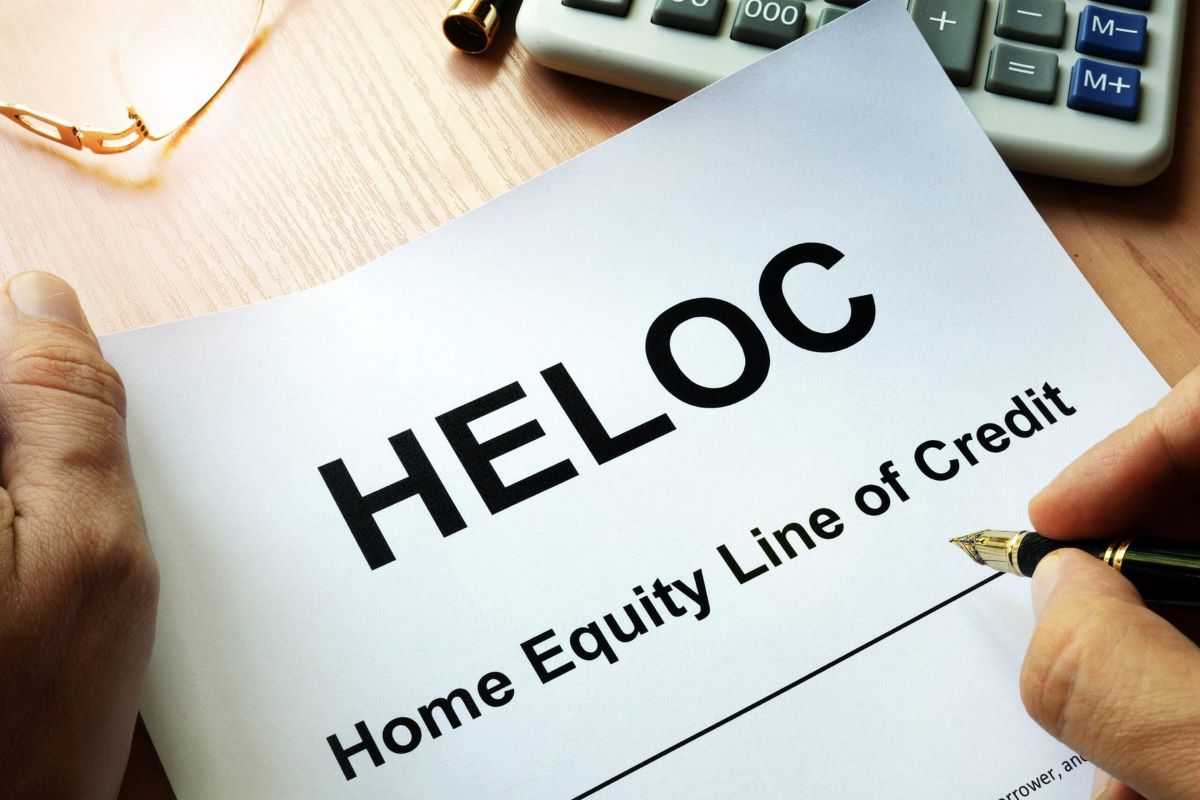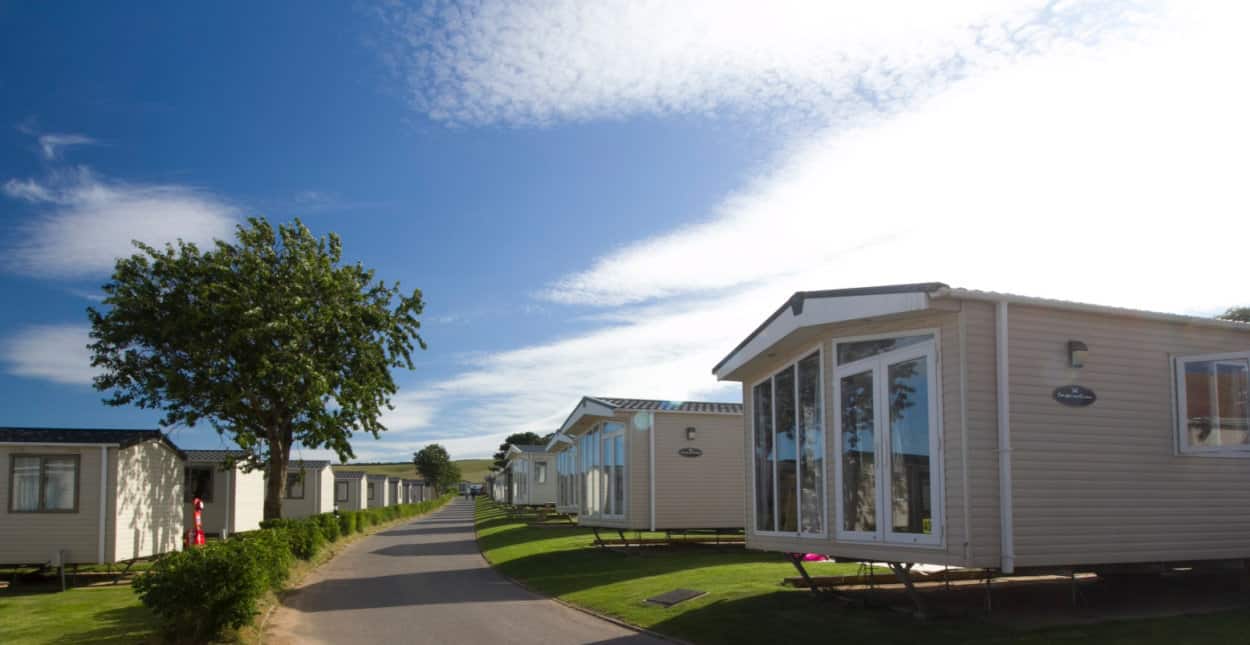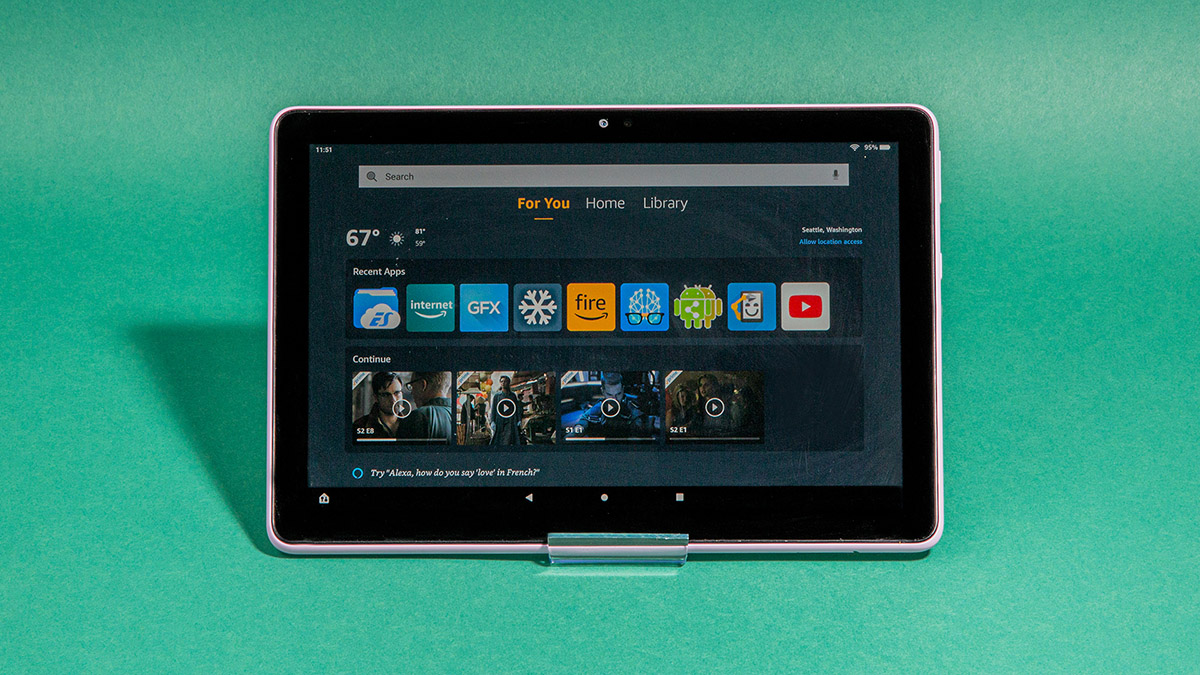Home>Finance>How To Get A Home Equity Line Of Credit With Bad Credit


Finance
How To Get A Home Equity Line Of Credit With Bad Credit
Published: January 10, 2024
Looking to secure a home equity line of credit with bad credit? Our finance experts provide valuable tips and strategies to help you navigate the process and increase your chances of approval.
(Many of the links in this article redirect to a specific reviewed product. Your purchase of these products through affiliate links helps to generate commission for LiveWell, at no extra cost. Learn more)
Table of Contents
- Introduction
- Understanding Home Equity Line of Credit (HELOC)
- Assessing the Impact of Bad Credit on Getting a HELOC
- Steps to Get a Home Equity Line of Credit with Bad Credit
- Check and Improve Your Credit Score
- Gather Necessary Financial Documents
- Research and Compare Lenders
- Explore Government Programs or Alternative Options
- Consider a Co-signer or Collateral
- Prepare a Strong Loan Application
- Work on Building a Relationship with Lenders
- Conclusion
Introduction
Obtaining a home equity line of credit (HELOC) can be a valuable financial tool for homeowners looking to tap into their home’s equity. With a HELOC, you can access funds for various purposes, such as home improvements, debt consolidation, or even emergency expenses. However, what if you have bad credit? Are you still eligible for a HELOC?
The idea of getting a HELOC with bad credit may seem daunting, as lenders typically consider your credit score to assess your creditworthiness. A poor credit score can raise concerns for lenders, as it indicates a higher risk of defaulting on payments. However, having bad credit doesn’t necessarily mean that you can’t qualify for a HELOC. With some strategic steps and thorough research, you may still be able to secure a home equity line of credit, even with less-than-perfect credit.
In this article, we will explore the process of obtaining a HELOC with bad credit, along with some practical steps to improve your chances of approval. We will also discuss alternative options, government programs, and the importance of building a relationship with lenders to increase your chances of success. By following these guidelines, you can work towards getting the financing you need while working towards improving your credit profile.
Understanding Home Equity Line of Credit (HELOC)
Before diving into the specifics of getting a HELOC with bad credit, let’s first grasp the concept of a home equity line of credit. A HELOC is a revolving line of credit that allows homeowners to borrow against the equity they have built in their property. It functions similarly to a credit card, where you can access funds as needed, up to a predetermined credit limit. The amount you can borrow is based on the appraised value of your home, minus any outstanding mortgage balance.
Unlike a traditional loan, a HELOC offers more flexibility. You can use the funds for various purposes, such as home renovations, college tuition, medical expenses, or even to consolidate high-interest debt. Additionally, you only make payments on the portion of the line you actually use, rather than the entire credit limit.
A crucial factor to consider when evaluating a HELOC is the interest rate. HELOCs typically come with variable interest rates that can fluctuate over time. This means that your monthly payments can vary based on market conditions. It is important to budget accordingly to manage potential increases in payment amounts.
Another important aspect to keep in mind is the draw period and the repayment period. The draw period is the timeframe during which you can borrow from your HELOC, typically ranging from 5 to 10 years. After the draw period ends, you enter the repayment period, where you can no longer withdraw funds and must start repaying the principal and interest over a set period, usually 10 to 20 years.
Now that we have a basic understanding of a HELOC, let’s explore how bad credit can impact your ability to obtain one and what steps you can take to improve your chances of approval.
Assessing the Impact of Bad Credit on Getting a HELOC
When it comes to obtaining a home equity line of credit (HELOC), your credit score plays a significant role. Lenders use your credit score to assess your creditworthiness and determine the terms and conditions of the loan. Bad credit can have a negative impact on your ability to qualify for a HELOC and may result in higher interest rates or stricter loan terms.
Here are some ways that bad credit can affect your chances of getting a HELOC:
- Higher interest rates: Lenders may view borrowers with bad credit as higher-risk individuals. To mitigate this risk, lenders may charge a higher interest rate on the HELOC. This can result in higher monthly payments and overall borrowing costs.
- Stricter qualification criteria: Lenders may impose stricter qualification criteria for individuals with bad credit. This could include requiring a lower loan-to-value ratio, higher credit score, or additional documentation to demonstrate financial stability.
- Reduced loan amount: Lenders may limit the amount of credit available to borrowers with bad credit. This means that you may only qualify for a lower credit limit, reducing your ability to access the funds you need.
- Limited lender options: Not all lenders are willing to extend credit to individuals with bad credit. This can limit your options and require additional research to find lenders that specialize in HELOCs for those with lower credit scores.
While bad credit can pose challenges, it’s important to note that each lender has different criteria and may consider other factors when evaluating your loan application. It’s essential to thoroughly research and compare lenders to find those that may be more accommodating to your situation.
Next, we will explore the steps you can take to improve your chances of getting a home equity line of credit with bad credit.
Steps to Get a Home Equity Line of Credit with Bad Credit
While having bad credit may present challenges when it comes to obtaining a home equity line of credit (HELOC), there are steps you can take to improve your chances of approval. Here are some key steps to follow:
- Check and Improve Your Credit Score: Start by checking your credit score and reviewing your credit report for any errors or discrepancies. Addressing and rectifying any inaccuracies can help improve your credit score. Additionally, focus on paying off outstanding debts, making payments on time, and avoiding new credit inquiries.
- Gather Necessary Financial Documents: Prepare the necessary documents lenders typically require when applying for a HELOC. This may include proof of income, tax returns, bank statements, and proof of homeownership. Having these documents ready will streamline the application process.
- Research and Compare Lenders: Look for lenders that specialize in working with individuals with bad credit or have specific programs designed for borrowers in similar situations. Compare their terms, interest rates, and fees to find the best options for your needs.
- Explore Government Programs or Alternative Options: Research any government programs or initiatives that may offer assistance to individuals with bad credit seeking a HELOC. Additionally, consider alternative options such as credit unions or online lenders that may have more flexible lending criteria.
- Consider a Co-signer or Collateral: Having a co-signer with a strong credit history can increase your chances of approval. Alternatively, you can explore the possibility of using collateral, such as a vehicle or other valuable assets, to secure the HELOC.
- Prepare a Strong Loan Application: Put together a comprehensive loan application that highlights your financial stability and ability to repay the loan. Include information on your income, employment history, and any other factors that demonstrate your creditworthiness beyond your credit score.
- Work on Building a Relationship with Lenders: If you are unsuccessful in obtaining a HELOC initially, don’t be discouraged. Continue working on improving your credit score and building a relationship with lenders. Over time, as you demonstrate financial responsibility, you may find more favorable borrowing options open up to you.
By following these steps, you can enhance your chances of securing a home equity line of credit, even with bad credit. Remember, patience and persistence are key, and taking proactive steps to improve your credit will not only increase your chances of approval but also put you on a path towards stronger financial health.
Check and Improve Your Credit Score
One of the most crucial steps in getting a home equity line of credit (HELOC) with bad credit is to check your credit score and take measures to improve it. Your credit score is a numerical representation of your creditworthiness and plays a significant role in the lending decision-making process. Here’s what you can do:
Check Your Credit Score:
Start by obtaining a copy of your credit report from each of the major credit bureaus (Equifax, Experian, and TransUnion). Review the report carefully for any errors, such as incorrect personal information, duplicate accounts, or inaccurate payment histories. Dispute any discrepancies with the credit bureau to have them corrected.
Pay Your Bills on Time:
Consistently paying your bills on time is one of the most effective ways to improve your credit score. Late or missed payments can have a negative impact on your creditworthiness. Set up payment reminders or automatic payments to ensure you don’t miss any due dates.
Reduce Your Debt:
Lowering your overall debt can have a positive effect on your credit score. Focus on paying off high-interest debts first, such as credit card balances or personal loans. Consider creating a budget and cutting unnecessary expenses to free up extra funds for debt repayment.
Avoid Opening New Credit Accounts:
Opening new lines of credit can temporarily lower your credit score. Limit the number of new credit applications you make, as each application results in a hard inquiry on your credit report. Instead, focus on responsibly managing your existing accounts.
Utilize Credit Wisely:
Avoid maxing out your credit cards or utilizing a significant percentage of your available credit limits. Aim to keep your credit utilization ratio below 30%. Using credit responsibly and keeping balances low can help improve your credit score over time.
Establish a Positive Credit History:
If you have a limited credit history, consider opening a secured credit card or becoming an authorized user on someone else’s credit card to start building a positive credit history. Make sure to use these accounts responsibly and make timely payments.
Improving your credit score takes time and discipline. Be patient and consistent in your efforts, and over time, you’ll see positive changes to your credit profile. Checking your credit score regularly and monitoring your progress can help you stay on track towards a better credit score and increase your chances of qualifying for a HELOC with better terms.
Gather Necessary Financial Documents
When applying for a home equity line of credit (HELOC) with bad credit, it’s essential to gather all the necessary financial documents to streamline the application process. Lenders will require documentation to assess your financial stability and determine your eligibility for a HELOC. Here are the key documents you should gather:
Proof of Income:
Lenders will want to see proof of your income to ensure that you have the means to repay the HELOC. Provide recent pay stubs, W-2 forms, or income tax returns for self-employed individuals. If you receive any additional income from rental properties, investments, or other sources, include documentation for those as well.
Tax Returns:
Most lenders will require copies of your recent tax returns, typically for the past two years. Tax returns provide a comprehensive view of your income, deductions, and overall financial situation. Ensure that you have accurate and complete copies of your returns to submit with your application.
Bank Statements:
It is crucial to provide recent bank statements, typically for the past three to six months. These statements provide evidence of your cash flow and help lenders assess your ability to manage your finances. Be prepared to provide statements for all your accounts, including checking, savings, and any investment or retirement accounts.
Proof of Homeownership:
As a HELOC is secured by your home’s equity, lenders will require documentation proving that you are the owner of the property. Gather documents such as your mortgage statement, property tax bill, or deed, which will establish your ownership and the value of your home.
Additional Documentation:
Depending on your financial situation and the specific requirements of the lender, there may be additional documents requested. These may include but are not limited to proof of insurance coverage, outstanding loan balances, or documentation of other assets or liabilities.
Having these financial documents ready before applying for a HELOC will save you time and ensure a smoother application process. Make sure all your documents are current, accurate, and organized. Providing complete and well-organized information will help build confidence with the lender and improve your chances of approval, even with bad credit.
Research and Compare Lenders
When seeking a home equity line of credit (HELOC) with bad credit, it is essential to research and compare lenders to find the best fit for your needs. Not all lenders have the same requirements or offer the same terms, so taking the time to find the right one can make a significant difference in your borrowing experience. Here are some factors to consider when researching and comparing lenders:
Specialization in Bad Credit HELOCs:
Look for lenders who specialize in working with individuals who have bad credit or offer specific programs for borrowers in similar situations. These lenders understand the challenges you may face and may be more willing to work with you to secure a HELOC.
Interest Rates and Fees:
Compare the interest rates and fees offered by different lenders. Higher interest rates and fees can significantly impact the overall cost of your HELOC. It’s important to weigh the rates and fees against the other terms and benefits offered to ensure you’re getting the best deal possible.
Loan Terms and Repayment Options:
Review the loan terms and repayment options offered by each lender. Look for flexibility in terms of repayment periods, draw periods, and the ability to make additional payments or pay off the loan early without penalties. Consider how these factors align with your financial goals and constraints.
Customer Reviews and Reputation:
Research customer reviews and ratings of the lenders you are considering. Reading about the experiences of others can provide valuable insights into their customer service, reliability, and transparency. Look for lenders with a positive reputation and a track record of providing excellent service to their clients.
Lender Stability and Support:
Consider the stability and support offered by the lender. You want to work with a reputable institution that will be there for you throughout the life of your HELOC. Look for lenders with a solid financial standing and excellent customer support to ensure a smooth borrowing experience.
By researching and comparing lenders, you’ll be able to find the one that best suits your needs and offers the most favorable terms, even with bad credit. This will not only increase your chances of obtaining a HELOC but also help ensure that you secure a loan that aligns with your long-term financial goals.
Explore Government Programs or Alternative Options
If you have bad credit and are struggling to find a lender willing to offer you a home equity line of credit (HELOC), don’t despair. There may be government programs and alternative options available to you. These can provide alternative avenues for obtaining the financing you need. Here are some options to explore:
Government Programs:
Research government-backed programs that assist individuals with bad credit in securing loans. One example is the Federal Housing Administration (FHA) home equity conversion mortgage (HECM) program, which offers a reverse mortgage option for seniors aged 62 and older. These programs often have more flexible lending criteria and may provide a pathway to obtaining a HELOC.
Local Housing Finance Agencies:
Contact your local housing finance agency to inquire about any assistance programs they may offer. These agencies often work with lenders to provide home financing options, including HELOCs, to individuals who may not meet traditional lending criteria. They may have programs specifically designed for borrowers with low credit scores or limited income.
Credit Unions:
Consider joining a credit union, as they tend to have more lenient lending criteria compared to traditional banks. Credit unions are member-owned financial institutions and often offer HELOCs to their members, even with less-than-perfect credit. Explore credit unions in your area and inquire about their lending programs.
Online Lenders:
Online lenders can be a viable alternative for individuals with bad credit who are unable to secure a HELOC from traditional lenders. These lenders often have more flexible lending criteria and may consider other factors beyond credit scores when evaluating loan applications. However, it is crucial to research these lenders thoroughly and ensure they are reputable and trustworthy.
Secured Options:
If traditional lenders are hesitant to provide a HELOC due to bad credit, consider exploring secured options. This may involve using collateral, such as a vehicle, savings account, or other valuable assets, to secure the loan. Offering collateral can provide lenders with additional assurance and improve your chances of obtaining a HELOC.
By exploring government programs, credit unions, online lenders, and secured options, you can increase your chances of finding a lender willing to work with you, even with bad credit. These alternative routes can provide viable solutions for obtaining the financing you need while working towards improving your creditworthiness for future borrowing opportunities.
Consider a Co-signer or Collateral
If you’re struggling to secure a home equity line of credit (HELOC) with bad credit, considering a co-signer or collateral can increase your chances of approval. Lenders may be more willing to extend credit if they have additional reassurances that the loan will be repaid. Here are two options to consider:
Co-signer:
A co-signer is someone who applies for the HELOC with you and shares equal responsibility for repaying the loan. Ideally, a co-signer should have a good credit score and a stable income. Their strong creditworthiness can help offset the impact of your bad credit, improving your chances of approval. Additionally, having a co-signer may lead to more favorable loan terms, such as lower interest rates or higher credit limits.
Keep in mind that both you and your co-signer will be equally responsible for repaying the loan. Failure to make payments can negatively impact both of your credit scores and may strain your relationship with the co-signer. Before asking someone to be your co-signer, ensure they fully understand the commitment and potential risks involved.
Collateral:
Offering collateral can provide an added layer of security for lenders when considering your HELOC application. Collateral is an asset, such as a vehicle, savings account, or other valuable property that you pledge as a guarantee for the loan. If you default on the loan, the lender has the right to seize the collateral to recoup their losses.
By offering collateral, you provide a form of assurance to the lender that they can recover their investment even if you are unable to repay the loan. This reduced risk may make them more willing to extend credit to you, even with bad credit. However, be aware that if you fail to make timely payments, you could lose the collateral you’ve pledged.
Before considering a co-signer or collateral, thoroughly assess your financial situation and the potential risks involved. It’s essential to have open and honest conversations with your co-signer and fully understand the terms and conditions associated with offering collateral. These options can provide opportunities to secure a HELOC even with bad credit, but they require careful consideration and responsible financial management.
Prepare a Strong Loan Application
When applying for a home equity line of credit (HELOC) with bad credit, preparing a strong loan application is crucial. Even with less-than-perfect credit, you can increase your chances of approval by presenting a comprehensive and convincing application. Here are some tips to guide you:
Provide Complete and Accurate Information:
Ensure that all the information you provide on the loan application is accurate and up-to-date. Double-check your personal details, financial information, and employment history. Inaccurate or incomplete information can lead to delays in processing your application or even rejection.
Highlight Your Financial Stability:
Emphasize your financial stability and ability to repay the loan. Include information about your current income, employment history, and any other sources of income or assets you may have. Demonstrating a steady and reliable source of funds can enhance the lender’s confidence in your repayment capacity.
Explain Your Bad Credit Situation:
Take the opportunity to explain the circumstances that led to your bad credit. If there were extenuating circumstances, such as job loss, medical expenses, or divorce, provide a brief explanation. Showing that you have taken steps to improve your credit and are committed to managing your finances responsibly can help mitigate concerns about your creditworthiness.
Showcase Your Home’s Value:
Highlight the value of your home, as it is the collateral for the HELOC. Include recent property appraisals, photographs, or any other supporting documents that showcase the condition and market value of your home. Demonstrating that you have substantial equity in your home can help offset concerns about your credit score.
Exhibit Debt Repayment Strategies:
Demonstrate that you are actively managing your debt by showing efforts to pay off existing debts or committing to a debt consolidation plan. Provide evidence of responsible repayment of other loans or credit lines. This shows lenders that you are taking steps to improve your overall financial situation.
Include Letters of Recommendation:
If you have maintained a positive relationship with your financial institutions or have a track record of responsible borrowing, consider including letters of recommendation from previous lenders. These letters can highlight your responsible payment history and financial integrity, further strengthening your loan application.
Remember to be honest and transparent throughout the application process. Lenders appreciate borrowers who are forthcoming with their information and demonstrate a genuine commitment to meeting their financial obligations. By presenting a prepared and convincing loan application, you can improve your chances of obtaining a HELOC, even with bad credit.
Work on Building a Relationship with Lenders
Building a strong relationship with lenders is a crucial step in obtaining a home equity line of credit (HELOC) with bad credit. Establishing trust and rapport can help improve your chances of approval and may even lead to more favorable loan terms. Here are some strategies to foster a positive relationship with lenders:
Communicate Openly:
Be honest and communicative with your lenders throughout the application process. Discuss your situation, credit history, and any challenges you may have faced that may have impacted your credit. By demonstrating transparency and a willingness to engage in open dialogue, you can build trust and understanding.
Follow Up Promptly:
Respond to any requests or inquiries from the lender in a timely manner. Promptly provide any additional documentation or information they require. This demonstrates your commitment and cooperation, reinforcing the lender’s confidence in your ability to manage the HELOC responsibly.
Establish a Reliable Payment History:
If you have existing loans or credit accounts, ensure that you make all your payments on time. Consistently meeting your financial obligations showcases your responsibility and reliability as a borrower. On-time payments can help improve your credit score over time and demonstrate your financial discipline to lenders.
Engage in Financial Education:
Show a genuine interest in understanding the borrowing process and improving your financial literacy. Engage with lenders to learn more about HELOCs and the factors they consider when evaluating loan applications. This demonstrates your commitment to becoming a better-informed borrower and may enhance your lender’s perception of your creditworthiness.
Seek Pre-Approval:
If you’re not yet ready to apply for a HELOC but are considering it in the future, seek pre-approval from lenders. This involves submitting your financial information and credit history for review, even if you’re not ready to proceed with the loan application immediately. Doing so allows you to establish a relationship with the lender, receive feedback on your credit profile, and potentially receive guidance on steps to improve your chances of approval.
Ask for Feedback:
If your application for a HELOC is declined, don’t be discouraged. Instead, ask the lender for feedback on why your application was unsuccessful. Their insights can provide valuable information on areas to focus on for future applications. Use this feedback as an opportunity to address any weaknesses and demonstrate your commitment to improving your creditworthiness.
Remember that building a relationship with lenders takes time and effort. Approach the process with patience, humility, and a willingness to learn. By demonstrating your reliability, responsibility, and commitment to financial improvement, you increase the likelihood of obtaining a HELOC, even with bad credit.
Conclusion
Obtaining a home equity line of credit (HELOC) with bad credit may present challenges, but it is not impossible. By following the steps outlined in this article, you can increase your chances of securing the financing you need while working towards improving your credit profile.
Start by checking your credit score and taking steps to improve it. Pay your bills on time, reduce your debt, and utilize credit wisely. These actions will not only make you a more attractive borrower but also set you on a path towards better financial health.
Gather all necessary financial documents and research and compare lenders. Look for lenders who specialize in working with individuals with bad credit or explore alternative options such as credit unions or online lenders. Consider a co-signer or collateral to provide additional assurance to the lender.
Prepare a strong loan application that highlights your financial stability, addresses your bad credit situation, and showcases your home’s value. Openly communicate with lenders, follow up promptly, and work towards building a relationship based on trust and understanding.
Remember, improving your creditworthiness takes time. Stay patient and persistent in your efforts and continue to work towards responsible financial management. As you make progress, your eligibility for a HELOC may improve, and more favorable borrowing options may become available to you.
While obtaining a HELOC with bad credit may be challenging, it’s important to remain optimistic. With determination, strategic planning, and perseverance, you can achieve your goal of securing a HELOC that unlocks the potential of your home’s equity and helps you achieve your financial objectives.














